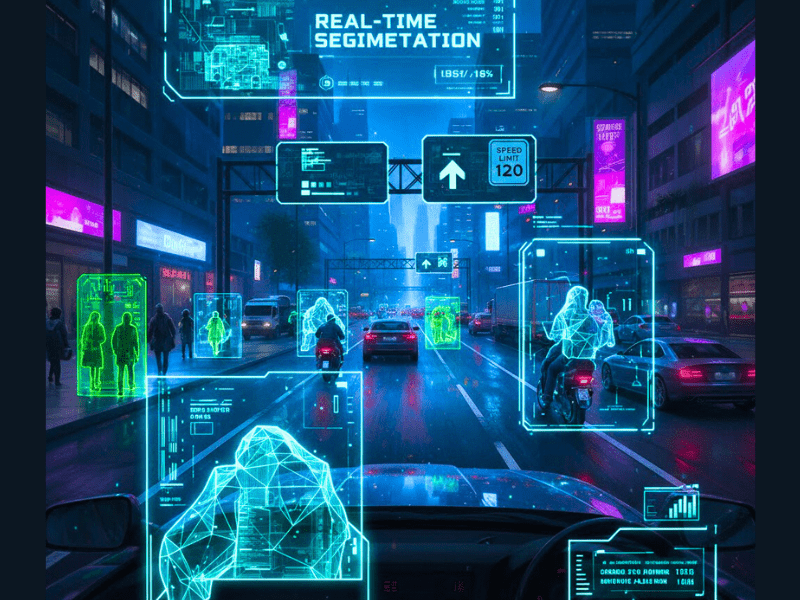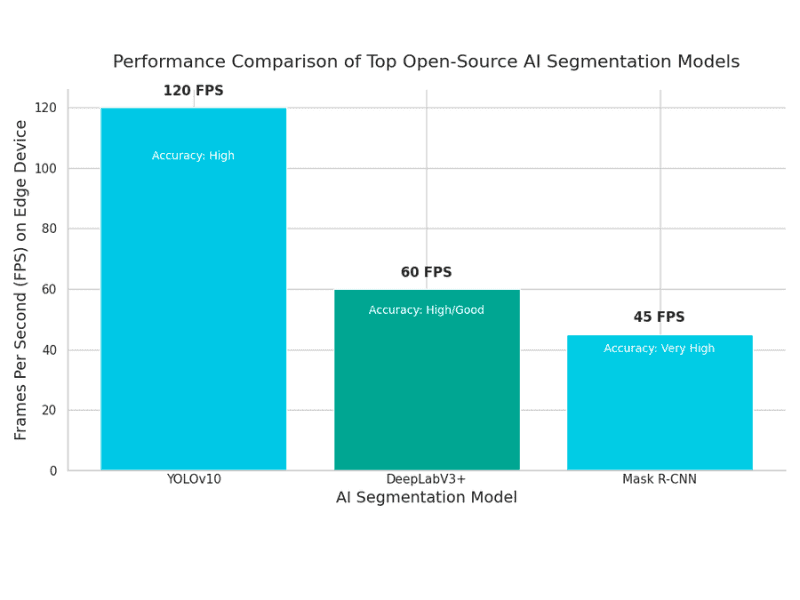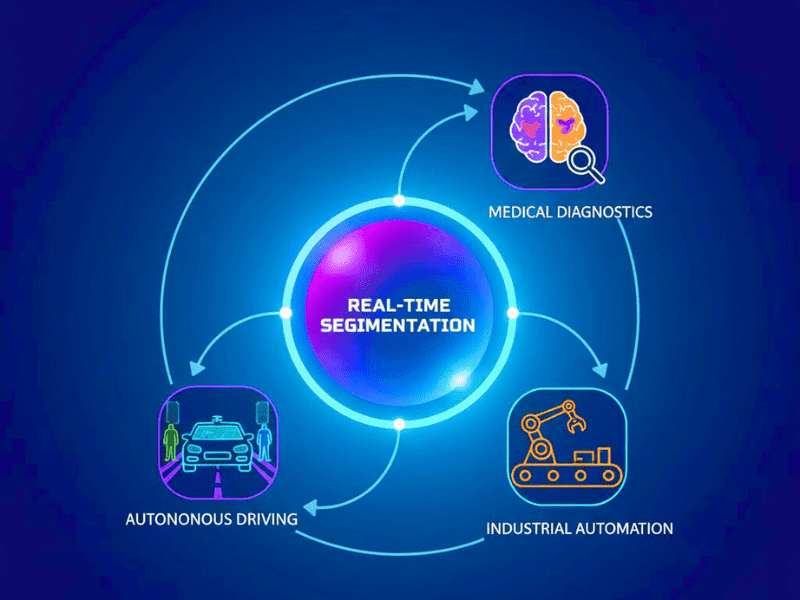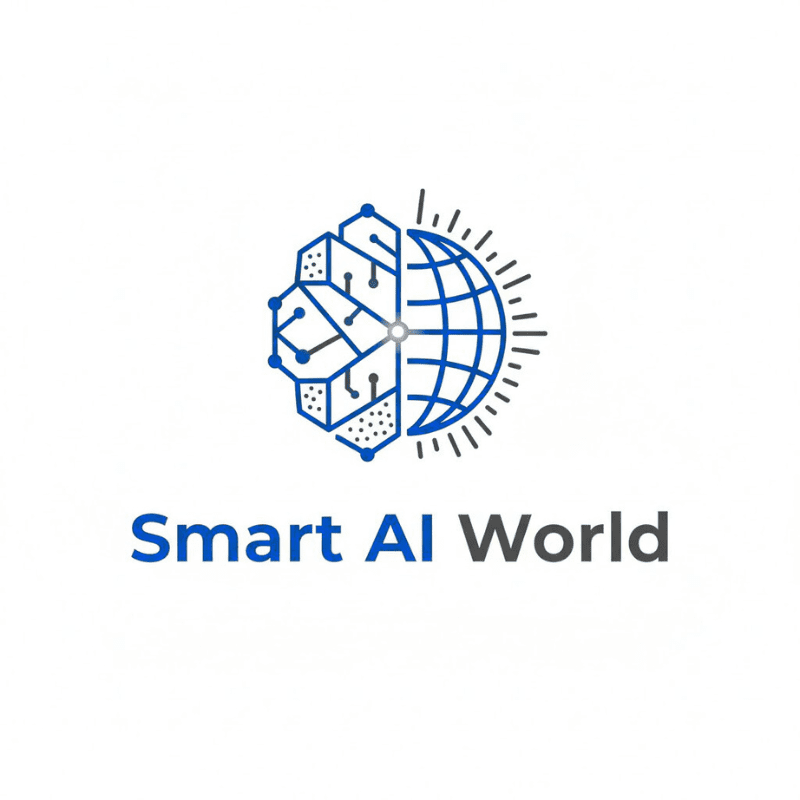Quick Navigation
Toggle🧠 Description

The competition for real-time image segmentation has intensified to a new level in 2025. The ability to recognize and segment things in milliseconds has become essential for a variety of applications, including industrial automation, healthcare diagnostics, and driverless cars.
That’s where the Best Open-Source AI Tools for Real-Time Image Segmentation come into play. In addition to reducing latency, these technologies are quick, effective, and scalable for production settings and edge devices.
Even with limited resources, they enable researchers, developers, and AI engineers to create systems that can separate data pixel-perfectly. Let’s examine the top 7 open-source AI tools that will revolutionize picture segmentation in 2025.
⚡ What Makes Real-Time Image Segmentation So Powerful?
When combined with the Best Open-Source AI Tools for Real-Time Image Segmentation, real-time image segmentation becomes incredibly potent. These tools allow AI systems to evaluate live video or picture data in milliseconds by enabling instant object detection and classification with low-latency, high-speed performance.
Open-source frameworks allow developers the freedom to tune models for speed and accuracy, whether for autonomous driving, robotics, or medical diagnostics. This makes real-time segmentation more intelligent, quicker, and more widely available.
🟢 1️⃣ YOLO (YOLOv8 & YOLOv10) – Fastest Real-Time Segmentation Model
The speed, effectiveness, and real-time inference power of YOLO (You Only Look Once) make it one of the Best Open-Source AI Tools for Real-Time Image Segmentation. The more recent iterations, YOLOv8 and YOLOv10, offer ground-breaking improvements in edge computing optimization, low latency performance, and high frames per second.
They are a great option for real-time computer vision jobs, industrial automation, and autonomous cars since they can provide frame-by-frame analysis in milliseconds. While YOLOv10 improved detection and segmentation layers for faster and more accurate inference, YOLOv8 featured a hybrid CNN-transformer backbone and enhanced model generalization.
YOLO is one of the Best Open-Source AI Tools for Real-Time Image Segmentation that developers can use right now because of its real-time efficiency and segmentation accuracy.
⚡ Why YOLOv10 Is Ideal for Real-Time Applications
Real-world speed was considered in the creation of YOLOv10. It uses lightweight attention modules and improved convolutional blocks to reduce computational overhead and achieve lightning-fast inference performance. YOLOv10 recognizes pedestrians and road signs in less than 10 ms each frame, which is essential for decision-making systems in fields like autonomous driving.
In terms of industrial automation, it continuously observes items on manufacturing lines and promptly detects flaws. Its compressed and quantized variants are effective on small devices without compromising accuracy in edge computing. To put it simply, YOLOv10 is the ideal combination of portability, performance, and precision for next-generation real-time segmentation applications.

💻 YOLO Open-Source GitHub and PyTorch Implementation
Both YOLOv8 and YOLOv10 may be found on the Ultralytics GitHub repository and are completely open-source. They provide adaptable APIs for deployment, training, and fine-tuning and are implemented in PyTorch.
With the ONNX Runtime or TensorRT for even quicker inference, developers can easily incorporate YOLO models into production processes. YOLO continues to be the industry standard for open-source, real-time segmentation in 2025 thanks to its robust community and regular improvements.
🟢 2️⃣ Mask R-CNN – Accurate Instance Segmentation Tool
Mask R-CNN remains one of the Best Open-Source AI Tools for Real-Time Image Segmentation in terms of pixel-perfect precision. Mask R-CNN, created by Facebook AI, is an extension of Faster R-CNN that incorporates a mask prediction branch that has simultaneous object detection and segmentation capabilities.
By allowing models to not only find objects but also comprehend their precise shape and boundaries, this architecture has emerged as the gold standard in instance segmentation. Constructed with PyTorch, Mask R-CNN is easy to use and adaptable for deployment, supporting both training from scratch and optimizing pre-trained models.
Because of its accuracy, it excels in fields where object-level precision is crucial, such as industrial analytics, medical diagnostics, and autonomous vision systems. Mask R-CNN regularly achieves high segmentation accuracy in both commercial AI pipelines and scholarly research, demonstrating its inclusion in the list of the Best Open-Source AI Tools for Real-Time Image Segmentation.
⚡ Advantages of Mask R-CNN for Object Detection
Performs instance segmentation with remarkable boundary precision.
Integrates easily with PyTorch for model training and transfer learning.
Offers a wide range of pre-trained models (COCO, Cityscapes, etc.) for instant experimentation.
Can be optimized for deployment using ONNX or TensorRT.
Handles overlapping objects better than most other segmentation networks.
For applications where segmentation accuracy is more important than raw inference speed, Mask R-CNN is therefore the recommended option.
🚀 Real-Time Use Case Example
Mask R-CNN aids in the detection of product flaws on high-speed conveyor belts in industrial automation. In order to improve safety, it is also essential for autonomous cars, which use real-time pedestrian and traffic sign recognition.
Its high-precision segmentation guarantees reliable results in mission-critical applications, despite the fact that it is not the fastest model.
🟢 3️⃣ DeepLabV3+ – Semantic Segmentation Specialist
DeepLabV3+ is one of the most dependable and effective frameworks yet developed for semantic segmentation. One of the Best Open-Source AI Tools for Real-Time Image Segmentation in 2025, this model was developed by Google Research and revolutionized the way AI systems interpret complicated images by classifying each pixel.
DeepLabV3+ performs exceptionally well in scene understanding, where it can accurately identify large regions such as highways, sky, and vegetation at the pixel level, in contrast to instance segmentation models that concentrate on individual items. DeepLabV3+, which is compatible with OpenCV and built with TensorFlow, provides high accuracy and enhanced performance.
It has an advantage in applications such as environmental monitoring, satellite images, and autonomous driving because of its Atrous Spatial Pyramid Pooling (ASPP) module, which efficiently gathers multi-scale context. DeepLabV3+ remains one of the Best Open-Source AI Tools for Real-Time Image Segmentation accessible today for academics and developers who want to deploy models on low-latency platforms without sacrificing accuracy.
The efficiency with which DeepLabV3+ operates on edge devices is one of its best qualities. The technology provides real-time segmentation on smartphones, drones, and embedded devices by transforming TensorFlow models into TensorFlow Lite versions and integrating them with OpenCV optimizations.
This makes it ideal for applications where success depends on lightweight, on-device inference, such as driverless cars, smart city surveillance, and agricultural drones.
⚖️ Comparing DeepLabV3+ vs YOLOv10
DeepLabV3+ excels in comprehensive semantic segmentation, while YOLOv10 dominates real-time object detection with its lightning-fast inference speed. Imagine YOLOv10 as a sprinter, incredibly quick and effective, and DeepLabV3+ as a marathon runner, steady, reliable, and incredibly accurate.
DeepLabV3+ is still the best option for those that prefer scene-level comprehension over object-level identification because of its excellent context-capturing features and well-balanced real-time performance.
🟢 4️⃣ U-Net – Best for Medical Image Segmentation
U-Net continues to be a perennial choice among researchers and healthcare professionals when it comes to medical imaging and accurate region detection. It is one of the Best Open-Source AI Tools for Real-Time Image Segmentation due to its straightforward encoder–decoder structure and adaptability for bespoke training.
U-Net was initially created for biological image segmentation, but its applications have already expanded well beyond medicine. Its use in computer vision applications today, such as satellite mapping, agricultural monitoring, and flaw identification, demonstrates the versatility of open-source systems.
Skip connections, which help preserve spatial features even after numerous convolutional procedures, are the model’s greatest strength. Because of this, U-Net is perfect for applications like tumor detection, organ segmentation, and lesion identification where pixel-level accuracy truly saves lives.
Its open-source implementation in PyTorch, TensorFlow, and Keras guarantees that anybody, from novices to AI experts, may effectively train, optimize, and implement models. Among the Best Open-Source AI Tools for Real-Time Image Segmentation in 2025, U-Net maintains its position thanks to its strong balance of speed, accuracy, and ease of use.
AI’s ability to understand medical images was transformed by U-Net. It is perfect for real-world hospital settings, where annotated medical datasets are frequently hard to come by, because it can function effectively even with a small amount of labeled data. In oncology, U-Net helps radiologists save diagnostic time by detecting tumor boundaries with pixel-perfect accuracy.
It helps with early disease diagnosis in ophthalmology by accurately mapping the retinal blood vessels. Furthermore, U-Net’s customizable training options enable fine-tuning for various imaging modalities, including ultrasounds, CT scans, MRIs, and X-rays, without requiring a whole architecture rebuild.
U-Net has laid the groundwork for quick, transparent, and easily accessible AI-powered diagnostics by fusing deep learning and healthcare.
🟢 5️⃣ Segment Anything Model (SAM) – Meta’s Revolutionary Open-Source Tool
Computer vision segmentation jobs have undergone a radical change thanks to Meta AI’s Segment Anything Model (SAM). Unmatched flexibility and scalability across sectors make it one of the Best Open-Source AI Tools for Real-Time Image Segmentation.
SAM can segment almost any object in any picture or video frame because it has been pre-trained on billions of masks from a variety of image types, unlike traditional models that require a lot of retraining for every dataset.
This paradigm combines instance and semantic segmentation into a single, cohesive system, allowing panoptic segmentation in addition to object boundary identification. This implies that SAM is able to concurrently detect several overlapping objects and their contextual surrounds.
For activities like video analysis, autonomous driving, AR/VR applications, and industrial automation, its low-latency design and real-time speed make it perfect.
SAM’s promptable interface is one of its greatest features; users can direct the segmentation by just clicking or sending textual cues. This interaction speeds up AI development cycles and lowers annotation expenses.
Additionally, pre-trained models, tutorials, and integration scripts for frameworks such as PyTorch and OpenCV are accessible through SAM’s open-source GitHub repository.
The Segment Anything Model remains at the top of the list of the Best Open-Source AI Tools for Real-Time Image Segmentation in 2025 because to its modular design and quick inference speed, establishing new standards for efficiency, accuracy, and adaptability.
With its strong pre-trained weights, the Segment Anything Model (SAM) enables users to segment nearly any dataset immediately. One of the most extensive segmentation resources on the market is its enormous dataset, SA-1B, which contains over 11 million photos and over a billion segmentation masks.
SAM provides developers and academics with a user-friendly GitHub repository that facilitates fine-tuning for specialized activities, like robotic vision, medical imaging, and agriculture. With customization options through PyTorch and ONNX, companies can deploy SAM efficiently across cloud or edge devices while retaining exceptional real-time speed.
SAM is still the preferred option for people looking for a flexible segmentation model because of its unique combination of generalization and flexibility.

⚡ Performance Comparison with YOLOv8
SAM performs exceptionally well in panoptic segmentation and contextual understanding, while YOLOv8 leads in object detection and fast frame rate.
SAM excels when high-quality mask precision is needed, while YOLOv8 is perfect for edge computing because to its exceptional speed and inference efficiency.
In summary, YOLOv8 may be the more sensible solution for fast-paced settings, but the Segment Anything Model is the better choice when your project calls for thorough segmentation and detailed object detailing.
🟢 6️⃣ Detectron2 – Facebook AI’s Framework for Real-Time Segmentation
One of the Best Open-Source AI Tools for Real-Time Image Segmentation is Detectron2, created by Facebook AI (now Meta AI). For both research and production use cases, it offers state-of-the-art accuracy, adaptability, and remarkable inference speed thanks to its foundation in PyTorch.
A variety of computer vision tasks, including as object detection, instance segmentation, keypoint detection, and panoptic segmentation, are supported by this next-generation framework under a single, cohesive architecture.
Detectron2 provides near real-time segmentation on cloud and edge devices by utilizing a highly efficient architecture that fully utilizes GPU acceleration. Its performance and adaptability make it a great choice for applications involving smart surveillance, industrial inspection, and autonomous driving.
The modular design of Detectron2 is what sets it apart. Without having to completely redo the coding, developers may quickly add new layers, backbone networks, or loss functions. This plug-and-play design retains high performance while promoting creativity.
Additionally, Detectron2 facilitates distributed training, which speeds up and improves the processing of huge datasets. Open-source deployment makes it easy to incorporate into pipelines for companies or researchers that need scalability, accuracy, and speed.
Detectron2, one of the Best Open-Source AI Tools for Real-Time Image Segmentation, keeps improving thanks to community contributions and Meta AI updates, guaranteeing long-term support and compatibility with the newest developments in deep learning.
Because of its clear coding structure, copious documentation, and smooth PyTorch interaction, Detectron2 has grown to be a developer favorite. By adjusting its pre-trained models for unique datasets, it can significantly cut down on training time without sacrificing segmentation accuracy.
Additionally, the framework offers an easy-to-use configuration system that makes it possible to quickly experiment with models without having to manually code each parameter. Its official GitHub repository also offers developers tutorials, APIs, and visualization tools that facilitate the testing, deployment, and optimization of real-time segmentation jobs.
All things considered, Detectron2 is among the most useful and effective tools for creating high-performance AI vision solutions because to its harmony of speed, flexibility, and developer accessibility.
🟢 7️⃣ OpenCV + TensorFlow + PyTorch Integration
One of the best methods for attaining real-time segmentation performance across devices and applications is to integrate OpenCV, TensorFlow, and PyTorch. They work in concert to create a potent synergy that improves accuracy, speed, and model deployment.
This integration allows developers to take advantage of the greatest features of each framework as part of the best Open-Source AI Tools for Real-Time Image Segmentation. TensorFlow and PyTorch control the deep learning models in charge of segmentation, detection, and classification, while OpenCV takes care of image preprocessing, filtering, and visualization.
TensorFlow Hub or PyTorch Hub pre-trained models are frequently used by developers, who subsequently refine them with OpenCV for practical application. Faster deployment pipelines, lower latency, and increased computing efficiency are guaranteed by this combination, particularly for edge devices and Internet of Things systems.
Additionally, trained architectures may be easily imported from TensorFlow and PyTorch using OpenCV’s DNN (Deep Neural Network) module, which transforms them into lightweight versions for real-time operation. These frameworks’ open-source status and active GitHub repositories facilitate rapid development by providing scripts, documentation, and sample projects.
When combined, these technologies offer developers a full-stack AI environment:
OpenCV for image and video data manipulation.
TensorFlow for robust training and model optimization.
PyTorch for flexibility, experimentation, and dynamic computation.
This formidable triumvirate is still at the forefront of computer vision innovation, assisting scientists and engineers in creating quick, precise, and scalable real-time segmentation systems. This integration is one of the best open-source AI tools for real-time image segmentation in 2025, which is not surprising.
For cloud and edge applications, integrating OpenCV with TensorFlow and PyTorch provides a significant increase in inference speed. Before supplying data to neural networks, OpenCV effectively manages operations like scaling, normalization, and color conversion, greatly cutting down on processing time. TensorFlow and PyTorch, meanwhile, maximize GPU use to guarantee lag-free, seamless performance.
High-FPS segmentation results are possible even with mid-range GPUs or mobile chipsets thanks to this integrated method. In order to reduce setup time and guarantee consistency, developers can also deploy models straight from GitHub sources into production settings. The foundation of contemporary real-time AI segmentation is ultimately the OpenCV-TensorFlow-PyTorch integration, which makes it quicker, more effective, and available to AI developers of all skill levels.
📊 Performance Comparison Table
| Model | FPS (Average) | Accuracy | Edge Compatibility | Framework |
|---|---|---|---|---|
| YOLOv10 | 120+ | High | ✅ Excellent | PyTorch |
| Mask R-CNN | 45 | Very High | ⚡ Moderate | PyTorch |
| DeepLabV3+ | 60 | High | ✅ Excellent | TensorFlow |
| U-Net | 55 | Very High | ✅ Excellent | Keras/TensorFlow |
| SAM | 50 | Exceptional | ⚡ Moderate | PyTorch |
| Detectron2 | 70 | High | ✅ Excellent | PyTorch |
| OpenCV+TF+PT | 100+ | High | ✅ Excellent | Multi-Framework |

🟢 Use Cases of Real-Time Image Segmentation
Applications that require speed, accuracy, and automation are powered by real-time picture segmentation, which is revolutionizing a variety of sectors. Developers may now effectively execute complicated visual operations on cloud and edge devices with the aid of the Best Open-Source AI Tools for Real-Time Image Segmentation.
Segmentation models enable autonomous cars make snap choices by identifying roadways, pedestrians, and barriers in milliseconds. With little manual input, AI-powered segmentation techniques in medical imaging help physicians identify cancers, divide organs, and increase diagnostic precision.
Robots employ segmentation to follow movements, distinguish between things, and carry out precise tasks on assembly lines, which is another major advantage of industrial automation. In the meantime, segmentation frameworks are used by computer vision researchers to create intelligent environmental monitoring, quality inspection, and surveillance systems.
Segmentation improves navigation, manipulation, and safety in robotics by assisting machines in understanding their environment. Open-source tools like YOLO, U-Net, and SAM enable developers to quickly test, optimize, and implement ideas, enabling these advancements.
In the end, the Best Open-Source AI Tools for Real-Time Image Segmentation have made top-notch technology more accessible to all, enabling researchers, businesses, and startups to develop more intelligent, dependable, and quick AI systems for everyday use.
⚙️ Real-World Implementation Examples
Tesla’s Autopilot, which recognizes lane lines and cars using real-time segmentation, is among the most prominent real-world instances. U-Net-based models help radiologists identify abnormalities in healthcare with high accuracy.
In manufacturing, robots systems with YOLOv10 enable vision-based picking and sorting with human-like accuracy, while AI-driven cameras identify faulty items instantaneously.
These practical applications, which range from smart cities to medical research, demonstrate how open-source AI segmentation tools are influencing the intelligent systems of the future in addition to spurring creativity.
🟢 Conclusion
The field of AI-powered computer vision has advanced quickly, and the best Open-Source AI Tools for Real-Time Image Segmentation are currently changing a variety of sectors, including robotics and healthcare. The accuracy, speed, and adaptability of models like YOLOv10, U-Net, Mask R-CNN, and SAM make them stand out; they are all particularly good at certain use cases including autonomous systems, industrial automation, and medical imaging.
Developers should weigh the trade-offs between hardware limitations, inference speed, and accuracy while selecting the best approach. YOLOv10 and Detectron2 rule real-time edge environments, but U-Net is still the best option for medical applications.
The Best Open-Source AI Tools for Real-Time Image Segmentation enable developers to experiment without boundaries while also making state-of-the-art technology accessible. Therefore, regardless of your level of experience, get started, take risks, and help mold the next generation of intelligent vision systems. 🚀

❓ FAQs
❓ Is YOLO used for image segmentation?
Indeed, YOLO is frequently utilized for real-time image segmentation tasks, particularly variants like YOLOv8 and YOLOv10. It offers low latency and high frames per second, making it perfect for real-time applications by combining object identification and pixel-level segmentation. Due to its speed and accuracy, YOLO is favored in industrial automation, security systems, and autonomous driving as one of the Best Open-Source AI Tools for Real-Time Image Segmentation.
❓ Can ChatGPT process images?
Indeed, ChatGPT’s most recent iterations are capable of analyzing and deciphering both text and visuals. ChatGPT can explain how the Best Open-Source AI Tools for Real-Time Image Segmentation, such as YOLO, U-Net, or SAM, process photos, even though it isn’t an image segmentation model in and of itself. When dealing with AI segmentation frameworks, ChatGPT can help you with setup, coding, or visualization tasks.
❓ Which AI is totally free?
Developers can use a lot of open-source AI tools for free. In the AI community, open-source frameworks like TensorFlow, PyTorch, OpenCV, and Detectron2 are frequently utilized. The majority of the Best Open-Source AI Tools for Real-Time Image Segmentation are also supported by these platforms, so you may train and use models without paying for a license.
❓ Is OpenCV better than YOLO?
YOLO and OpenCV have various uses. YOLO is a deep learning-based segmentation and detection model, whereas OpenCV predominantly functions as a computer vision library for image processing and analysis. Together, they provide strong real-time performance. Both are actually essential components of the Best Open-Source AI Tools for Real-Time Image Segmentation, and they work in perfect harmony on projects at the production level.
❓ What is the best method for image segmentation?
Your application will determine the optimal approach. Models such as Segment Anything Model (SAM) and YOLOv10 are excellent for real-time application due to their speed and versatility. When it comes to medical imaging, U-Net offers unparalleled accuracy. These all fall under the category of the Best Open-Source AI Tools for Real-Time Image Segmentation, giving developers options according to domain requirements, accuracy, and performance.
❓ Which is better, YOLO or SSD?
Both SSD (Single Shot Detector) and YOLO (You Only Look Once) are effective real-time detection models. However, in terms of segmentation speed and accuracy, YOLOv10 typically performs better than SSD. Additionally, integrating it with edge devices and PyTorch is simpler. Because of this, YOLO is frequently included in lists of the Best Open-Source AI Tools for Real-Time Image Segmentation, particularly for developers who want to achieve blazingly quick inference with low latency.
